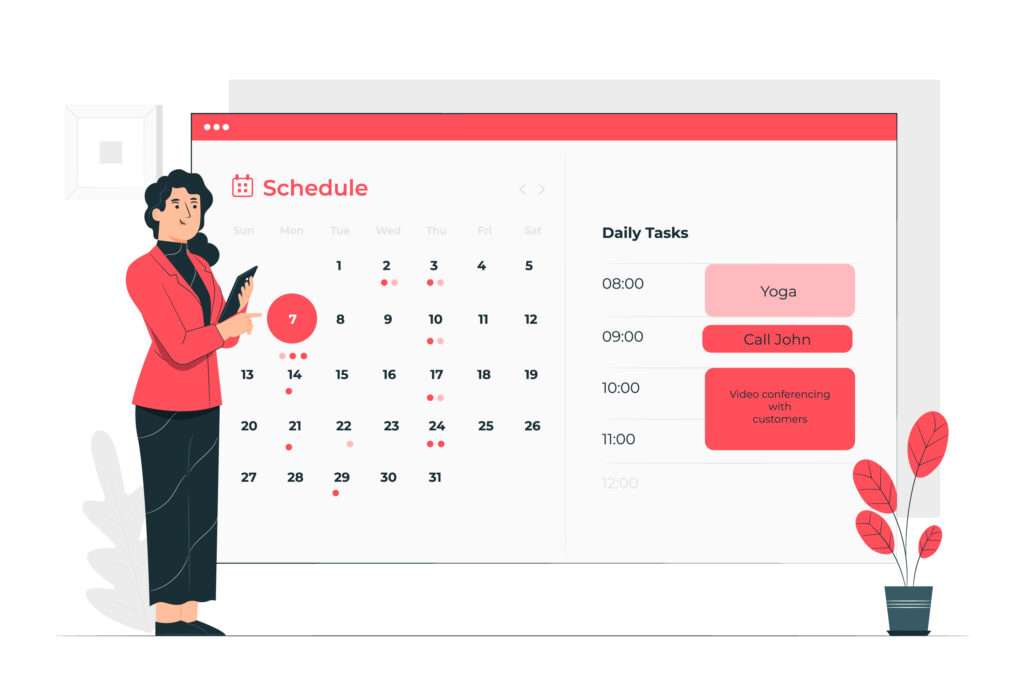One of the most effective strategies for engaging with your audience and building brand visibility is content creation. However, without a clear plan, it can quickly become overwhelming. This is where a content calendar becomes invaluable. By using a well-structured content calendar, you can streamline your content marketing efforts, ensuring that your messaging stays consistent, timely, and relevant. In this article, we’ll explore how to create a content calendar that aligns with your business goals, increases efficiency, and helps you stay ahead of your content schedule.
What is a Content Calendar?
A content calendar is a strategic planning tool used to organize and schedule upcoming content across different platforms, such as blog posts, social media updates, newsletters, and other marketing efforts. In essence, it’s a roadmap for your content creation process, allowing you to plan in advance and maintain a consistent publishing schedule.
Though content calendars may vary depending on the size and scope of your business, the underlying principle remains the same: to provide clarity, structure, and organization for your content marketing efforts.
Why You Need a Content Calendar

Before diving into how to create a content calendar, it’s important to understand why having one is essential. Here are the key benefits:
- Consistency in Posting: A content calendar ensures regular and consistent posting, which is crucial for maintaining audience engagement and building brand awareness. Additionally, consistency helps improve your SEO rankings, as search engines reward websites that publish fresh content regularly.
- Better Organization: With a calendar, you can visualize your entire content strategy, making it easier to align content with key marketing initiatives, product launches, or seasonal campaigns.
- Time Management: Planning ahead with a content calendar saves time by allowing you to batch content creation, plan around holidays, and avoid the stress of last-minute posts.
- Improved Team Collaboration: If you’re working with a team, a content calendar allows for better communication and collaboration. Writers, designers, and social media managers can work together seamlessly, knowing what’s expected and when it’s due.
- Tracking Performance: By scheduling content in advance, you can track its performance over time and make data-driven adjustments to your strategy based on what resonates most with your audience.
Steps to Create a Content Calendar
Creating an effective content calendar requires strategic planning, attention to detail, and alignment with your overall marketing objectives. Here’s a step-by-step guide to help you create one:
1. Define Your Goals
Before you start planning your content, it’s essential to define your marketing goals. For example, are you looking to increase brand awareness, drive website traffic, or boost conversions? Your content calendar should reflect these goals by aligning your content with your business objectives.
For instance, if your goal is to increase traffic, your calendar may include SEO-driven blog posts, while a focus on conversions might involve more product-related content, such as tutorials and case studies.
2. Choose Your Content Platforms
Next, determine which platforms you’ll use to distribute your content. A good content calendar often includes multiple platforms, such as:
- Blog: Long-form articles that drive organic traffic and establish authority.
- Social Media: Short, engaging posts to boost visibility and interaction.
- Email Newsletters: Direct communication with your audience for promotions and updates.
- Videos and Podcasts: Multimedia engagement catering to different audience preferences.
By identifying your key platforms, you can better allocate resources and time to create content for each one.
3. Determine Your Content Types

Content calendars are most effective when they include a variety of content types. This ensures that you’re providing value to your audience in multiple ways. Some popular content types include:
- How-to Guides: Informative posts that solve specific problems for your audience.
- Case Studies: Showcasing real-life examples of your product or service in action.
- Listicles: Engaging, easy-to-digest lists covering topics related to your niche.
- Interviews or Expert Insights: Adding authority and unique perspectives to your content.
- Videos or Webinars: Visual or interactive content appealing to visual learners.
By mixing up your content types, you’ll keep your audience engaged and more likely to return for future posts.
4. Set Your Publishing Frequency
Consistency is key in content marketing, yet you also need to strike a balance to avoid overwhelming your audience or stretching your resources too thin. Based on your available resources, determine how often you can realistically publish quality content. This may vary for different platforms:
- Blog Posts: Weekly or bi-weekly
- Social Media Updates: Daily or multiple times a week
- Email Newsletters: Monthly or bi-monthly
- Videos or Podcasts: Monthly or bi-weekly
By setting a realistic publishing frequency, you can manage expectations and ensure the quality of your content remains high.
5. Brainstorm Content Ideas
Once you’ve established your goals, platforms, content types, and publishing frequency, it’s time to brainstorm content ideas. Ideally, these ideas should align with your business goals, audience interests, and seasonal trends. A few ways to generate content ideas include:
- Keyword Research: Use SEO tools to identify keywords and topics that are popular in your niche.
- Audience Feedback: Look at comments, reviews, and direct messages from your audience to identify pain points and frequently asked questions.
- Competitor Analysis: Analyze what type of content your competitors are publishing and how it’s performing.
After brainstorming, organize your ideas in a way that flows well throughout the month or quarter.
6. Create an Editorial Calendar
Now comes the most important step: organizing your content into an editorial calendar. You can use tools like Google Sheets, Excel, or specialized platforms like Trello or Asana to manage your calendar.
Your editorial calendar should include:
- Content Topic: The subject or theme of the content.
- Content Type: Blog post, social media update, video, etc.
- Due Date: When the content needs to be completed.
- Publishing Date: The scheduled date for publication.
- Promotion Strategy: How the content will be promoted (e.g., email, social media).
By creating a detailed editorial calendar, you ensure that everyone on your team is aligned, deadlines are met, and no content opportunities are missed.
Tools to Help You Create a Content Calendar

Several tools can make the process of building and managing a content calendar easier:
- Google Sheets/Excel: For those who prefer a simple, customizable option.
- Trello/Asana: Project management tools that allow for easy collaboration and task assignments.
- CoSchedule: A dedicated content calendar tool that integrates with your marketing platforms.
- Hootsuite/Buffer: Social media scheduling tools that allow you to plan and publish social media content in advance.
Best Practices for Managing Your Content Calendar
Once you’ve created your content calendar, it’s essential to keep it up-to-date and flexible. Here are a few best practices for managing your content calendar effectively:
- Stay Organized: Regularly review and update your calendar to reflect changes in business priorities, audience preferences, or external factors such as holidays and trends.
- Be Flexible: Sometimes, unexpected opportunities arise, like industry news or a trending topic. While it’s important to stay consistent, be open to adjusting your calendar to take advantage of timely content.
- Track Performance: Use analytics tools for tracking the performance of your content on different platforms. Based on this data, adjust your content strategy and calendar to focus on the types of content that drive the best results.
Conclusion
Any effective content marketing plan must include the setup of a content calendar. It helps ensure consistency, improves organization, and aligns your content with broader marketing goals. By following the steps outlined in this guide, you can create a content calendar that boosts efficiency and maximizes the impact of your content marketing efforts.
Start small, experiment with different content types, and be willing to adjust based on performance metrics. Once you’ve mastered the art of the content calendar, you’ll be better equipped to create engaging, timely, and strategic content that resonates with your audience.







